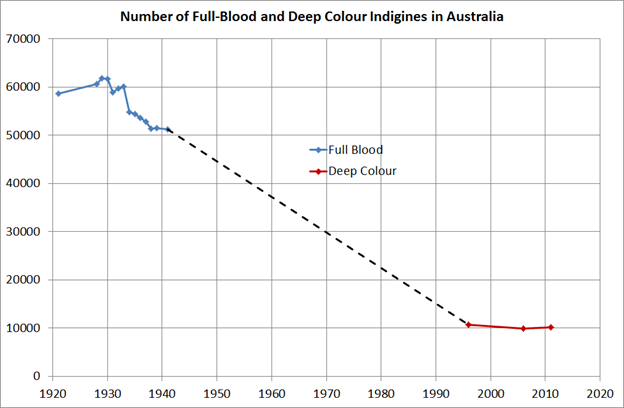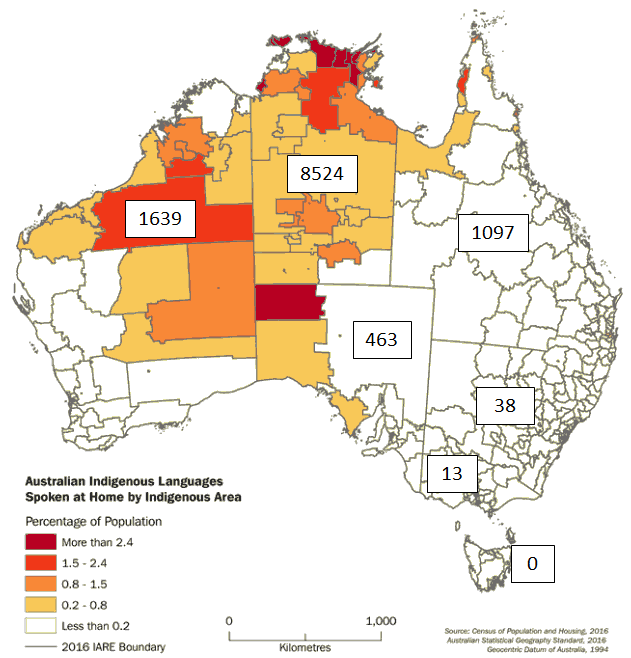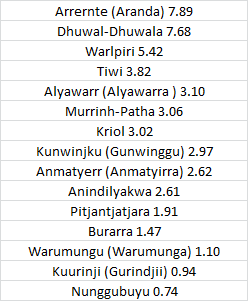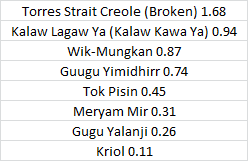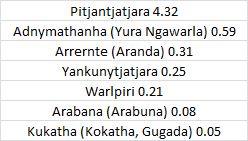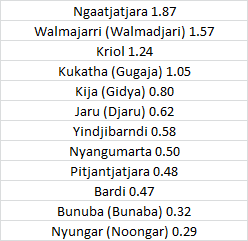I’m 90% of the way through the 1 metre thick pile I borrowed about aborigines.
And I still feel as though I’m holding one end of a slinky, with the truth on the other end, and trying to deduce the truth from the end of the slinky that I’m holding.
Even the simplest of questions have no easy answer, as the information just isn’t there.
Q1. How many full-blood aborigines are there in Australia these days?
Answer: Anywhere between none and 100,000. There were official census counts yearly between 1928 and 1941. But since then no-one has got off their official fat arse to count full-bloods.
Here’s the plot I did of census data, with projections to the present day.

Q2. How many mixed race children were stolen from their European, Chinese and Macassan fathers by aborigines?
Answer: Anywhere between none and 100,000.
Q3. How many aboriginal and part aboriginal children were killed by aborigines? (There are records of strangled, bashed, speared, starved and abandoned)
Answer: Anywhere between none and 100,000.
Q4. How many mixed race children were stolen from their aboriginal families by whites?
Answer: Anywhere between none and 100,000. According to aboriginal activists who lived through the period in question, before 1970, the answer is none, there is not a single contemporary account in activist literature.
Q5. How many aborigines died in a fever epidemic in Cape York in the 1930s, that may have extended as far west as the Kimberley?
Answer: Anywhere between none and 20,000.
Q6. How many aborigines still alive have gone through tribal initiation?
Answer: Anywhere between none and 100,000
Q7. How many aborigines these days still have a hunter-gatherer lifestyle?
Answer: Anywhere between none and 100,000
Q8. How many aborigines these days still hunt kangaroo with spears while wandering around naked?
Answer: At last count (1941) about 10,000
Q9. How many aborigines these days still follow the tribal laws allowing murder, beatings, and other violations of basic human rights?
Answer: Not a clue
If the information about any of these exists at all then it is hidden in documents that are not easily accessible. I still feel as though I’m holding one end of a slinky, with the truth on the other end.
The bureau of statistics definition of an aboriginal as “anyone who wants to call themselves an aboriginal” (independent of heritage) is fine, so far as it goes, it’s the same way as defining “Christian” or “Greek” for example. But it falls far short of ideal in evaluating how much of the differences in health, education, employment and housing are due to DNA.
In the absence of genetic information, I’m trying to use extraneous information such as aboriginal language spoken at home as a proxy for tribal membership.

Even allowing for the definition of an aboriginal as “anyone who wants to call themselves an aboriginal”, there is no settlement in the whole of Australia that is 100% aboriginal.
